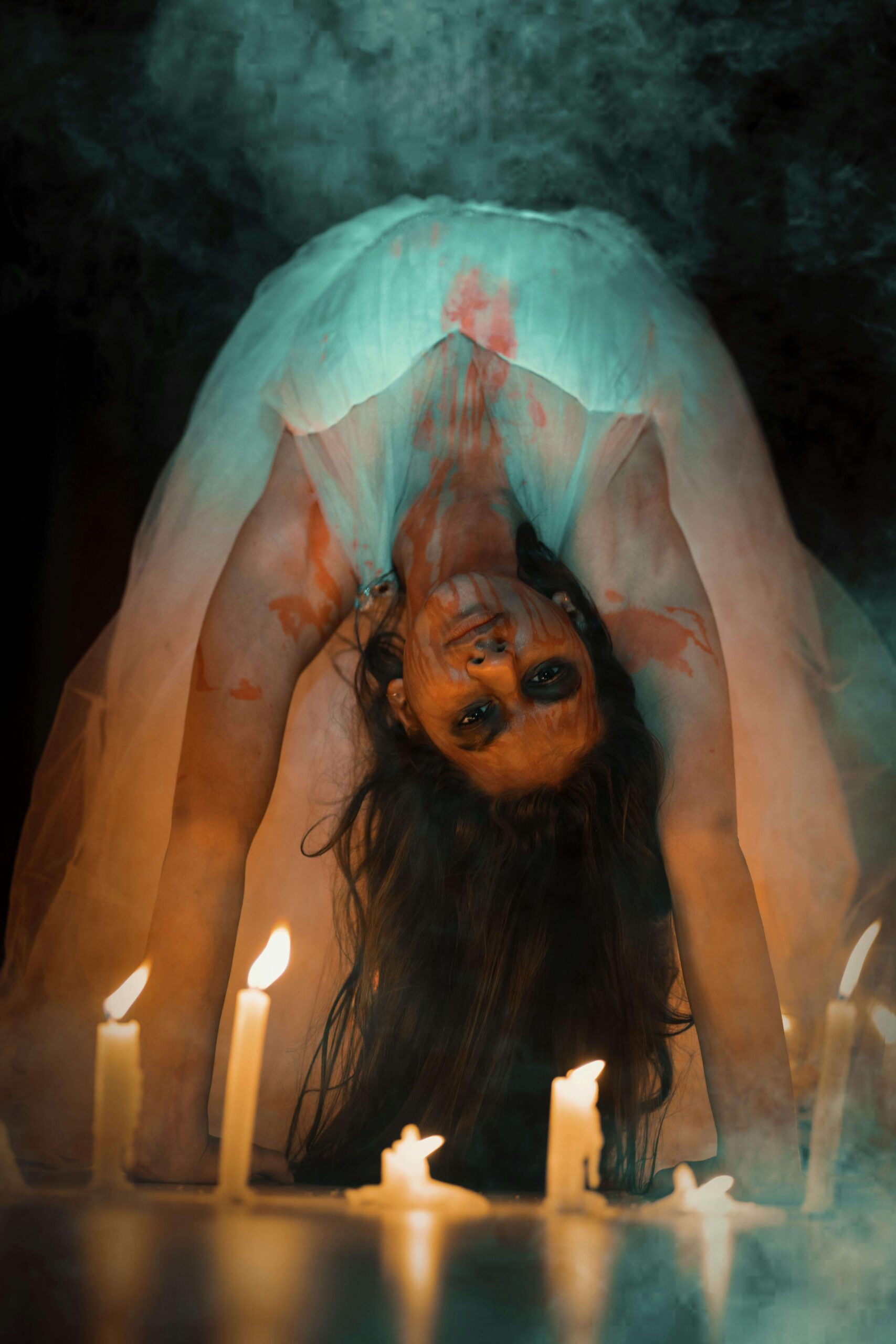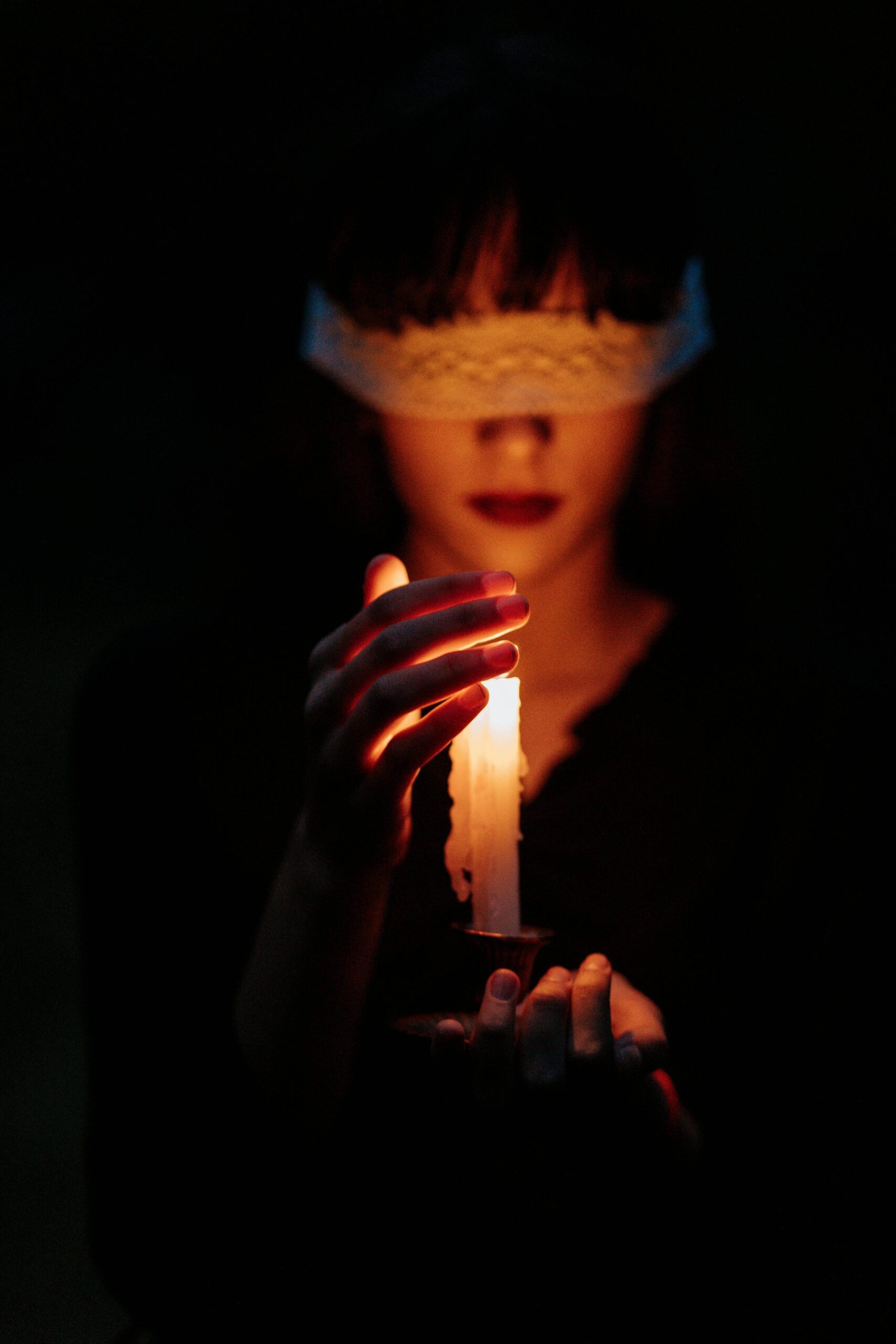
There’s a shift in horror fiction right now that you can’t ignore.
Readers are hungry for stories that dig into pain, power, and rage in ways that feel personal, and more authors are answering that call by leaning into a subgenre called Femgore. Think gore with grit, blood with backbone, and horror that bleeds with emotion and meaning.
So what exactly is Femgore?
It’s a type of feminist horror that fuses graphic violence with stories centered on the female experience. These aren’t your usual final girl tales. Femgore stories explore trauma, transformation, rage, bodily autonomy, and all the messy, terrifying layers of womanhood. And people are devouring it.
This subgenre doesn’t pull punches. It leans into the grotesque—the blood, the rot, the rage—because those things say something true. Whether it’s a woman turning into a monster or using her pain to survive a brutal world, the horror feels earned.
It taps into real fears—being controlled, dismissed, hurt, or silenced—and gives them sharp teeth. When done well, Femgore makes you flinch, not just from the gore but from how close the story cuts to home.
TikTok’s #Femgore hashtag has been gaining traction, with creators recommending books and films that fit the genre. The raw honesty of these stories, paired with shock and surrealism, makes them impossible to scroll past.
This viral interest is helping readers discover authors who might’ve been overlooked before. You’ll find short stories with thousands of saves, horror recaps that spark heated debates, and readers posting their own emotional reactions to female-led horror novels and feminist horror fiction.
The rise of body horror in literature, particularly ones that center on the female body, didn’t just happen because someone thought gore was trendy. There’s been a long, slow buildup to this point.
People are tired of horror that looks polished but says nothing. They want grit. They want guts. They want something that makes them feel seen in the discomfort.
If you’re an author looking for where fiction is heading, this is a current you can wade into with purpose. Femgore doesn’t require permission. It asks for boldness. So if you have something to say and you’re not afraid to go bloody to say it, this is your opening.
Femgore Defined
“Femgore” combines “feminine” and “gore” to form a bold subgenre that centers graphic, often grotesque, depictions of the female body and experience.
It embraces horror tropes but filters them through a lens of empowerment, revenge, and survival. You’ll often see characters battling trauma, confronting societal expectations, or turning monstrous in ways that feel thrillingly justified.
What makes Femgore so compelling is that it doesn’t hide the ugly parts of being a woman. It puts them right at the center. The blood, the screams, the unraveling—it’s all part of the story, not there to shock, but to reveal.
These narratives strip away the romanticism that usually wraps around the female body and give you raw, unfiltered horror that means something.
The rage in Femgore is sharp. It’s focused. You can feel it in every twisted bone and every drop of blood. The violence isn’t thrown in for gore points. It’s deliberate, symbolic, and deeply rooted in real-life struggles.
There’s something powerful about reading a scene where a woman rips through the page, not as a symbol or sidekick, but as the force that drives the horror.
Abuse, shame, inequality—those things don’t just lurk in the background. They’re front and center, dressed up in teeth and rot, forcing you to look.
Some recurring themes you’ll notice in Femgore include the use of menstruation, childbirth, and menopause as metaphors for transformation or horror.
These stages of the female body are often treated as taboo or uncomfortable in everyday life, but in Femgore, they’re reframed as powerful, terrifying, and deeply meaningful.
Sexual trauma is also a central thread, but instead of stories that beg for sympathy, Femgore delivers revenge arcs that demand reckoning. The pain isn’t hidden. It’s weaponized.
Then there’s the monstrous feminine, where the female body itself becomes something to fear, control, or survive. Whether it’s decaying, mutating, or devouring, that body tells you something primal about what society finds threatening, and why.
What I find gripping about writing in this space is how freeing it is. You’re not polishing characters to fit an ideal. You’re digging into what’s been suppressed, ignored, or flattened. With Femgore, horror doesn’t hide from the body. It starts with it.
Why Femgore Is Growing
There’s a cultural appetite for honesty, even when that honesty is ugly, bloody, and uncomfortable. For decades, women in horror were either victims or eye candy. Femgore flips the narrative.
When you write in this space, you’re not playing by the old rules. You’re tapping into a collective need for stories that let women be angry, messy, violent, and real.
There’s something powerful about reading a scene where a woman rips through the page, not as a symbol or sidekick, but as the force that drives the horror.
Here’s what’s driving its popularity:
Social media visibility has played a huge role. Hashtags like #HorrorTok and #Femgore have pushed indie horror titles and lesser-known authors into the spotlight.
On TikTok, you’ll find creators dissecting scenes from self-published books, recommending female-led horror novels, and starting conversations that go deep into topics like abuse, rage, and body horror. These platforms have become emotionally charged spaces where readers go to feel something real.
There’s also the weight of post-pandemic tension. The last few years exposed emotional cracks that had been quietly building. Readers are no longer reaching for polished survival stories that tie things up neatly.
They want catharsis. They want fiction that mirrors what it feels like to unravel. Femgore delivers that by turning horror into a metaphor for grief, burnout, betrayal, and fear, emotions that still hang heavy in the air.
We’re also seeing more female horror authors breaking through. A 2023 study from Bowker showed that women now make up 51% of the self-published fiction market, and horror is among the fastest-growing genres.
This means we’re getting more stories told from lived experience, more narratives where darkness feels familiar, and more authors who are pushing hard against outdated genre rules.
And then there’s the influence of film and TV. Series like Yellowjackets, The VVitch, and Brand New Cherry Flavor have cracked the door wide open for feminine-driven horror.
These shows are gritty, psychological, and sometimes brutal to sit through, but that’s what makes them stick. They prove that when you center horror around complicated women and real emotional brutality, audiences are ready to engage.
I’ve seen it firsthand—authors who used to write quietly in the background are now building real communities and audiences around feminist horror fiction and body horror in literature. The demand is real, and it’s only getting louder.

The Authors Leading the Femgore Movement
You’re not alone in this space. Many authors are already making waves in Femgore, and their work is setting a high, bloody bar for what this subgenre can do.
Carmen Maria Machado (Her Body and Other Parties)
Machado uses surrealism and horror to depict violence against women with unsettling intimacy. Her stories don’t hold your hand. They make you sit in discomfort, shifting between reality and nightmare with brutal elegance.
She’s one of the few authors I’ve read who can make you feel gut-punched by a sentence that looks soft until it’s too late.
Hailey Piper (The Worm and His Kings)
Piper crafts queer, body-centric horror that challenges traditional gender norms. Her work dives deep into transformation and identity in a way that feels both terrifying and liberating.
You can tell she writes from a place of truth, and that rawness gives her horror an emotional weight that lingers long after you finish the last page.
T. Kingfisher (What Moves the Dead)
This author leans into atmospheric dread and grotesque transformations. Her stories have this creeping rot that slowly pulls you in, then smacks you with something unforgettable.
Her ability to blend dark humor with full-body chills is something I really admire, especially if you’re writing horror that wants to unsettle without relying on cheap shocks.
Zoje Stage (Baby Teeth)
This story explores female psychopathy and maternal horror. Her take on the twisted dynamics between a mother and her child is unflinching.
You feel the tension in every interaction. Her stories hit especially hard if you’re interested in how horror can crawl into everyday domestic life and reveal something vicious under the surface.
Even classic authors like Shirley Jackson and Angela Carter laid the groundwork by exploring domestic dread and psychological torment.
Jackson’s We Have Always Lived in the Castle and Carter’s The Bloody Chamber continue to influence modern feminist horror fiction with their eerie takes on isolation, control, and femininity turned feral.
If you’re studying female-led horror novels to better understand Femgore, start with these names. Read what makes their characters tick. Watch how they wield horror as a tool for commentary, expression, and catharsis. That’s where the good stuff is.
Why Femgore Matters to the Genre, and to You
Femgore isn’t a detour from horror; it’s a deeper tunnel. It gives writers a way to challenge old tropes, stretch boundaries, and tap into personal and collective fear.
The subgenre expands what horror can do by centering emotions and experiences that were often ignored or written off.
It’s one of the few spaces in horror where being uncomfortable is the goal, not just because of the blood, but because of what the blood represents.
You get to write stories that stare back at the reader. Stories that make people flinch, then keep reading. And when it works, it feels like you’ve finally told the truth you’ve been sitting on for years.
If you’re an author, Femgore is your opportunity to write without flinching. You can explore taboo topics with depth and nuance, the kind of subjects most genres touch with gloves. Body image, sexual shame, generational trauma, female rage. These don’t have to be side notes.
They can be the heart of your story. In my own writing, I’ve taken the things that made me feel small or broken and reshaped them into horror scenes that felt oddly freeing. That’s the power of putting your fear in the driver’s seat.
It’s also a space where you can write violent, emotionally charged stories that still carry empathy. Femgore lets you go feral on the page and still keep your heart in it.
Think gore with grit, blood with backbone, and horror that bleeds with emotion and meaning.
You can write about a woman who destroys everything in her path and still give her a soul. The goal isn’t to make her likable. It’s to make her real.
And if you’re worried no one’s looking for this kind of work, they are. The audience is out there, especially on TikTok, Goodreads, and indie horror forums. Readers are done with safe, sanitized horror. They’re craving stories that leave a mark.
I’ve seen self-published authors with zero budget go viral overnight because someone connected with their messy, bloody, emotionally devastating book. That kind of connection is rare in traditional spaces, but in Femgore, it’s almost expected.
You don’t have to write exploitation or trauma porn. Femgore is about control. You decide what’s shown, what’s left off-page, and what the blood stands for.
Whether it’s a metaphor, a memory, or a punishment, that’s your call. The violence only matters if it means something, and you get to choose what that something is.
Challenges and How to Navigate Them
Of course, writing Femgore comes with risk.
You’ll have to tread carefully around trauma. There’s a fine line between shock value and emotional truth. Some readers will connect instantly. Others may push back. Writing scenes that deal with abuse, shame, or bodily destruction requires intention and clarity.
You have to know why you’re showing what you’re showing because if you’re not sure, the reader won’t be either. That doesn’t mean you have to sanitize your work. But it does mean understanding how your horror lands and why it needs to land that way.
You also might face resistance from mainstream publishers who still hesitate to market ‘difficult’ women-centric horror. I’ve spoken to authors who were told their work was “too disturbing,” “too niche,” or “too angry.”
It’s frustrating, especially when the male equivalent of that same horror is praised for being bold. Some editors still look for the familiar final girl formula, the neat redemption arc, or the kind of horror that doesn’t challenge gender expectations too much.
That said, the indie scene is thriving.
Small presses like Raw Dog Screaming Press, Nightscape Press, and Off Limits Press are actively building catalogs that celebrate transgressive work written by women, BIPOC, and LGBTQ+ voices.
These publishers are hungry for stories that bite back, stories that aren’t afraid to be too weird, too violent, too emotional, or too honest. They understand what Femgore is trying to do.
And if traditional or indie publishing feels too slow, you’ve got options. Many authors are finding real success on Wattpad, Kindle Vella, or by self-publishing directly through Amazon KDP. That direct route lets you keep full creative control.
You can write the story exactly how you want, upload it, and start building your audience right away. Some of the most powerful feminist horror fiction I’ve read didn’t come from big publishers. It came from authors who were tired of waiting and decided to release the monster on their own terms.
If you’re writing Femgore, expect to face some friction. But that friction? It means you’re writing something that matters.
How to Write Femgore That Resonates
If you’re ready to experiment, here are a few things that helped me:
1. Start with emotion, not shock.
When I wrote my first piece of horror, it came from a place of frustration and helplessness. I had no plan to write something graphic, but the violence poured out naturally because that’s what the emotion demanded.
The gore wasn’t decoration. It was how I processed what I couldn’t say aloud. You can always scale back later, but writing from that emotional pressure point is what gives the story teeth. Readers can tell when you mean it.
2. Give your female characters agency.
Whether they survive, burn it all down, or become the monster, let their choices carry weight. Even if they fall apart, make sure they fall on their own terms.
I’ve learned that readers connect more when the character isn’t reacting to horror like a puppet, but leaning into it, resisting it, or twisting it into something of their own. Especially in feminist horror fiction, agency makes the blood feel earned.
3. Use horror as metaphor.
Some of the most disturbing stories I’ve read weren’t scary because of the gore. They were scary because the horror felt real beneath the surface. A decaying house that mirrors a woman’s collapsing mental state.
A monster that grows each time the main character silences herself. The most haunting stories are the ones where the monster isn’t some outside force, but something inside the character, or the world she lives in. Femgore thrives when you tap into that kind of layered meaning.
Writing Femgore that resonates means pulling from a place that’s personal, even if it’s uncomfortable. It’s not about chasing trends. It’s about using horror to tell the truth in a language people can feel in their bones.
Sometimes that truth is brutal. Sometimes it’s tender, buried in all the blood and rot. Either way, when it’s honest, it sticks.

What Femgore Means for the Future of Publishing
The demand for feminist horror is climbing, and the publishing world is starting to pay closer attention. It’s part of a broader shift toward horror that feels personal, emotional, and unapologetically intense.
Right now, agents are actively scouting manuscripts that push boundaries, especially in the horror, thriller, and speculative fiction space. If you’ve got something raw and risky, now is the time to finish it.
Film studios are watching, too. Projects like My Best Friend’s Exorcism, Fresh, and Men show that horror centered on the female body or experience is profitable when it’s done right.
These films dig into themes like autonomy, trauma, obsession, and body control, and audiences are showing up for them. That means publishers and studios alike are looking for the next story that hits the same nerve.
If you’re pitching to agents or publishers, don’t downplay what makes your story difficult. Highlight:
- Emotional stakes that leave a bruise
- Cultural relevance that reflects what people are actually feeling
- Strong female lead(s) with psychological complexity, who don’t exist to be liked—they exist to feel real
These elements are part of what makes Femgore sell. From where I’m sitting, Femgore is the kind of writing that punches through the noise. It tells the truth with a knife in its hand, but not just to stab—to carve out space for what’s been buried.
The gore is metaphor, but it’s also a refusal to stay quiet. It says, “I’m here, and I’m not cleaning myself up to make you comfortable.” And in a world that still tries to tone women down, there’s something powerful about stories that bleed loud.
If you’ve ever felt like horror didn’t have room for your voice, this is your sign to make room. Write something messy. Write something that shakes.
That’s Femgore. And the world is ready for more of it.




